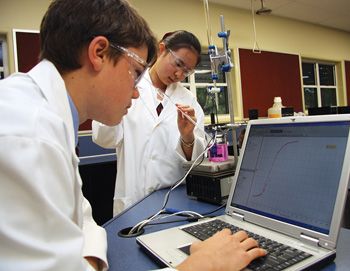Schools in Australia deserve the best in electrical safety: keeping students, staff and visitors safe from electrical hazards is an absolutely vital part of promoting a safe environment. Everything from fire hazards to safe work practice can be boosted with an understanding of some of the common electrical risks faced in schools.
Most schools perform well when it comes to school electrical safety. A combination of sustained education of staff and students by leading experts and strict government regulation means that schools are, almost universally, electric-friendly. But, even in the most careful school, things can – and, at the worst moment, will – go wrong.
First and foremost, all electrical work must be completed by a qualified and licensed electrician. This isn’t exactly news: it’s be basic best-practice. Unlicensed or unqualified electricians can take shortcuts which will leave students and staff at risk.
In this day and age of the connected classroom, everything from projectors to interactive whiteboards, computers, and all the little bits in between are energy reliant. Installation of new electrical work should only be completed by an experienced technician. The trend of technology dependent classrooms leaves more room for error here: we’ve seen everything from stacked power boards to overloaded power sockets in schools we’ve worked in, and while it might be tempting to add just one more device to an already strained socket, NSW Fire & Rescue recommend against it.
The good folks at Fire & Rescue have drawn up a list of power board recommendations, which are more than applicable in Australian schools: stick to power boards with built in safety switches or circuit breakers; don’t overload your boards, and, in less common knowledge, it’s always a good idea to keep boards on their side. This actually stops dust getting into any unused sockets – protecting against a potential fire risk.
Of course, it’s not all about fire hazards. Carelessly placed wires can trip all of us when we least expect it: and damaged or frayed wires are a great way to spark a nasty, dangerous shock. In Queensland the Department of Education and Training note that 90% of faults in electrical equipment can be found with visual inspection. Look out for tears in wires, burnt sockets or twisted leads. It’s a good starting point to know when it’s time to replace, repair, or remove a risk.
Schools face unique challenges to electrical safety. The cosmopolitan mix of students with different levels of knowledge about electrical risks sits alongside teachers who may be unaware of some of the practices that lead to electrical hazards as a primary cause of electrical faults and dangers in Australian schools. There’s some great material for teaching electrical safety out there, and it’s really important to continually reinforce the seriousness of staying safe around electricity to students. A quick decision by a staff member or a student to overload of a circuit with just one more plug, for instance, can lead to a school wide blackout, or, at worst, put someone at risk of serious harm.
Safe schools means safe electrical. Work with your local licensed electricians to promote electrical safety in your school, and keep students and staff safe from common risks. By knowing a few of the danger signs, Australian schools and their staff can remain ahead of the game in keeping an environment that’s conductive not just to power, but to learning. Maintaining electrical best practice, identifying faults early, and keeping students in the loop means a school can focus on what really matters: teaching and learning.
Don’t let unsafe electrical interrupt a lesson: your local electricians for your school are always nearby, always ready to rescue you! Stay safe!



